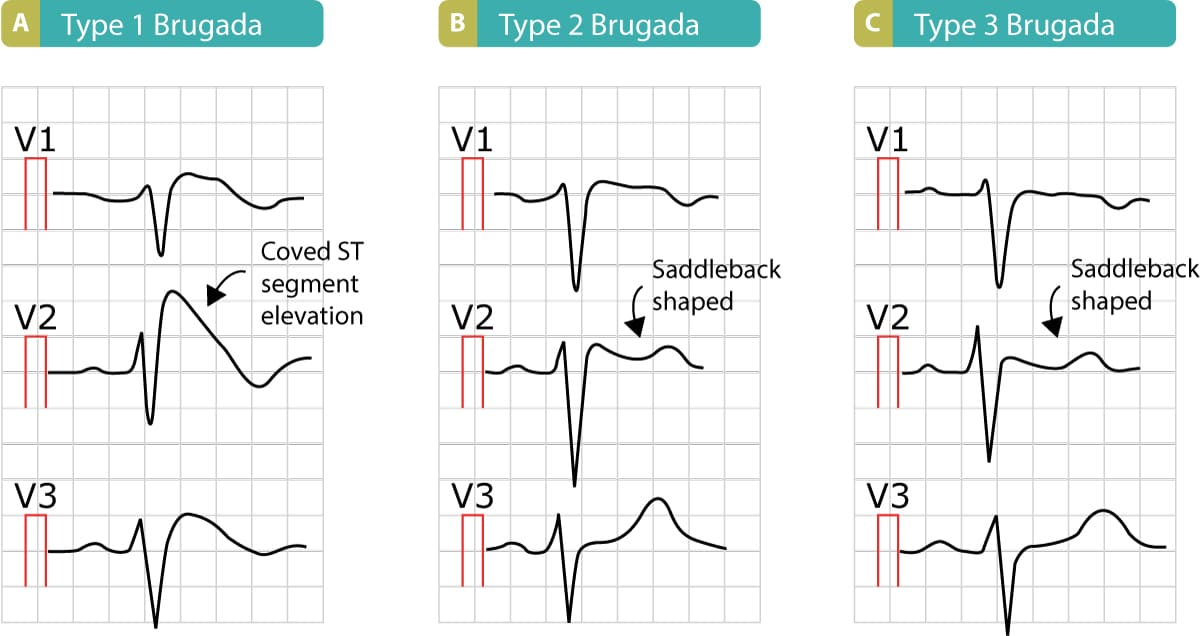Brugada Type 1 2 3

The right panel shows a type 3 pattern in which the st segment is elevated 1 mm.
Brugada type 1 2 3. The middle panel illustrates a type 2 pattern with a saddleback st segment elevated by 1 mm. Some medications particularly antiarrhythmic drugs that block the cardiac sodium current i na can reveal a type 1 brugada pattern in susceptible people. The most typical and diagnostic is type 1 brugada syndrome. It should be stressed that type 1 is the only ecg diagnostic pattern of bs.
It is often referred to as brugada sign. It has either a saddleback or coved appearance but with an st segment elevation 1 mm. Brugada brew gah dah syndrome is a rare but potentially life threatening heart rhythm disorder that is sometimes inherited. Type 1 brugada occurs in 12 10 000 people 1 type 2 and 3 brugada occurs in 58 10 000 people 1 prevalance of brugada pattern ecg.
The brugada syndrome may present with three different ecg patterns referred to as type 1 type 2 and type 2 brugada syndrome ecg. It has 2 mm j point elevation 1 mm st segment elevation and a saddleback appearance followed by a positive or biphasic t wave. Brugada syndrome types 1 2 and 3 there are three types of ecg presentations referred to as type 1 type 2 and type 3 brugada syndrome. According to current recommendations only a type 1 ecg pattern occurring either spontaneously or in response to medication can be used to confirm the diagnosis of brugada syndrome as type 2 and 3 patterns are not infrequently seen in persons without the disease.
Brugada syndrome is diagnosed in patients with type 2 or type 3 st segment elevation in 1 lead among the right precordial leads v1 v2 positioned in the 2nd 3rd or 4th intercostal space when a provocative drug test with intravenous administration of class i antiarrhythmic drugs induces a type i ekg morphology 3. Asia 0 36 europe 0 25 and in the usa 0 03 2 ecg pattern can wax and wane making the true incidence underestimated. This is the only ecg abnormality that is potentially diagnostic. It features large coved st segment elevations and t wave inversions in leads v1 v3.
The st segment elevation has a coved shape often described as shark tail in v1 v2 or v3. First degree atrioventricular block. People with brugada syndrome have an increased risk of having irregular heart rhythms beginning in the lower chambers of the heart ventricles. Showed in a study of 325 patients with brugada type 1 that the presence of first degree atrioventricular block was significantly associated in multivariate analysis with increasing risk of ventricular fibrillation or 2 41 95 ci 1 01 5 73 p 0 046.



















